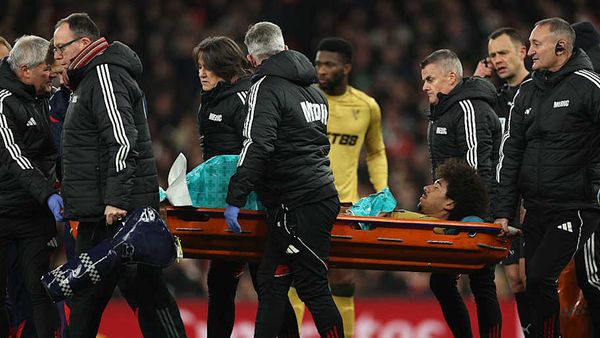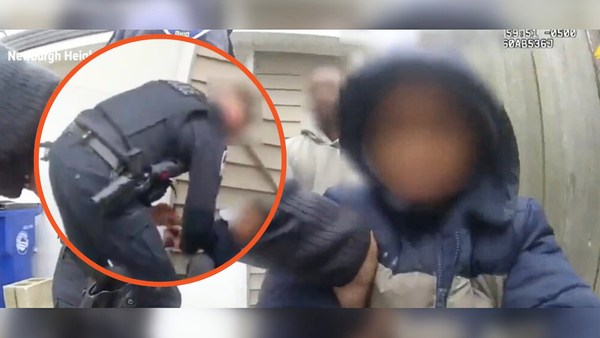The Supreme Court appeared ready to allow the Biden administration to regulate so-called ghost guns during oral arguments Tuesday, as the justices turned to food and furniture analogies to weigh whether a federal firearm law covers gun parts kits.
A Bureau of Alcohol, Tobacco, Firearms and Explosives rule from 2022 requires that sales of those gun parts kits comply with federal rules for commercially made guns, such as serial numbers, background checks and recordkeeping.
Solicitor General Elizabeth Prelogar told the justices that the government has the authority under the Gun Control Act of 1968 because the kits are hardly a collection of parts since they are sold as nearly complete weapons with instructions to finish them.
Justice Samuel A. Alito Jr. questioned whether that argument would mean that a pad and a pen made a grocery list, or a collection of ingredients made an omelet.
“If I put on a counter some eggs, some chopped-up ham, some chopped-up pepper, some chopped-up onions, is that a Western omelet?” Alito said.
Prelogar responded that wouldn’t be an omelet because, again, those items can be used to make other kinds of food as well.
“The key difference here is that these weapons parts kits are designed and intended to be used as instruments of combat and they have no other conceivable use,” Prelogar said.
Justice Amy Coney Barrett jumped in and pointed out there’s a difference between a collection of ingredients and a purpose-made kit. Barrett is seen as a key vote in the case, along with Chief Justice John G. Roberts Jr., since they voted for the rule to remain in effect while the case played out.
“Would your answer change if you ordered it from Hello Fresh and you got a kit and it was like turkey chili but all of the ingredients are in the kit?” Barrett said.
Prelogar responded that it would, and she pointed out that the agency’s rule purposely focused on what remained to be done on an unfinished frame or receiver to create a finished firearm.
“If you bought from Trader Joe’s some omelet-making kit that had all of the ingredients to make the omelet, and maybe included whatever you would need to start the fire to cook the omelet and had all that objective indication that was the way it was marketed and sold, we would recognize it for what it is,” Prelogar said.
The Biden administration finalized the rule in 2022 amid a surge of unregistered firearms. The case hinges on just how close a product can be to a working frame or receiver, which is the housing for the firing mechanism and barrel of a firearm.
An attorney for the challengers to the rule, Peter Patterson, argued Tuesday that Congress made specific decisions when writing the statute in 1968 and didn’t intend for the ATF to come up with its own definition of “frame or receiver” after the fact.
The agency is “operating outside the bounds set by Congress,” Patterson said.
Patterson argued the kits are meant for hobbyist use, and the rule would put dozens of companies out of business. That was met with skepticism from Roberts, who questioned the “hobbyist” nature of the products.
“What is the purpose of selling a receiver without holes drilled in it?” Roberts said.
“Some individuals want to construct their own firearms,” Patterson said, in the same way someone works on their own car in their garage.
“Drilling a hole or two I would think doesn’t give the same sort of reward you would get from working on your car on the weekends,” Roberts said.
Alito questioned whether the government could justify its focus on how easily someone can convert the kit into a functional frame or receiver, given that people regularly struggle with Ikea furniture kits.
Patterson also argued that the agency’s interpretation of what makes a frame or receiver “readily convertible” would effectively turn popular rifles like AR-15s into machine guns under federal law because they can be converted into automatic weapons by drilling one hole.
Prelogar pointed out that if the gun kits were really hobbyist projects, there should be no problem with individuals passing background checks to get the kits. “They were sold to be crime guns,” Prelogar said.
Prelogar said that the rule mostly set into writing the agency practice for decades, with the exception that it now included “jigs” and other devices meant to take the guesswork out of where to drill holes to make a functional frame.
The market for the kits collapsed after the Supreme Court allowed the rule to go into effect while the case played out, Prelogar said.
She also pointed out that establishing a stricter test would create a vast incentive for the broader firearms industry to create firearms that evaded the normal rules for serialization and background checks.
“Going forward, all guns could be ghost guns,” Prelogar said.
At one point, Justice Brett M. Kavanaugh said he was concerned about potential criminal consequences for gunmakers who unintentionally sold regulated weapons.
Prelogar said that any manufacturer could check in with the ATF about whether a product would be regulated and it was unlikely that a prosecution would result.
The justices are expected to issue a decision in the case, Garland v. VanDerStok, before the conclusion of the term at the end of June.
The post Supreme Court sounds ready to back regulation of ‘ghost guns’ appeared first on Roll Call.







